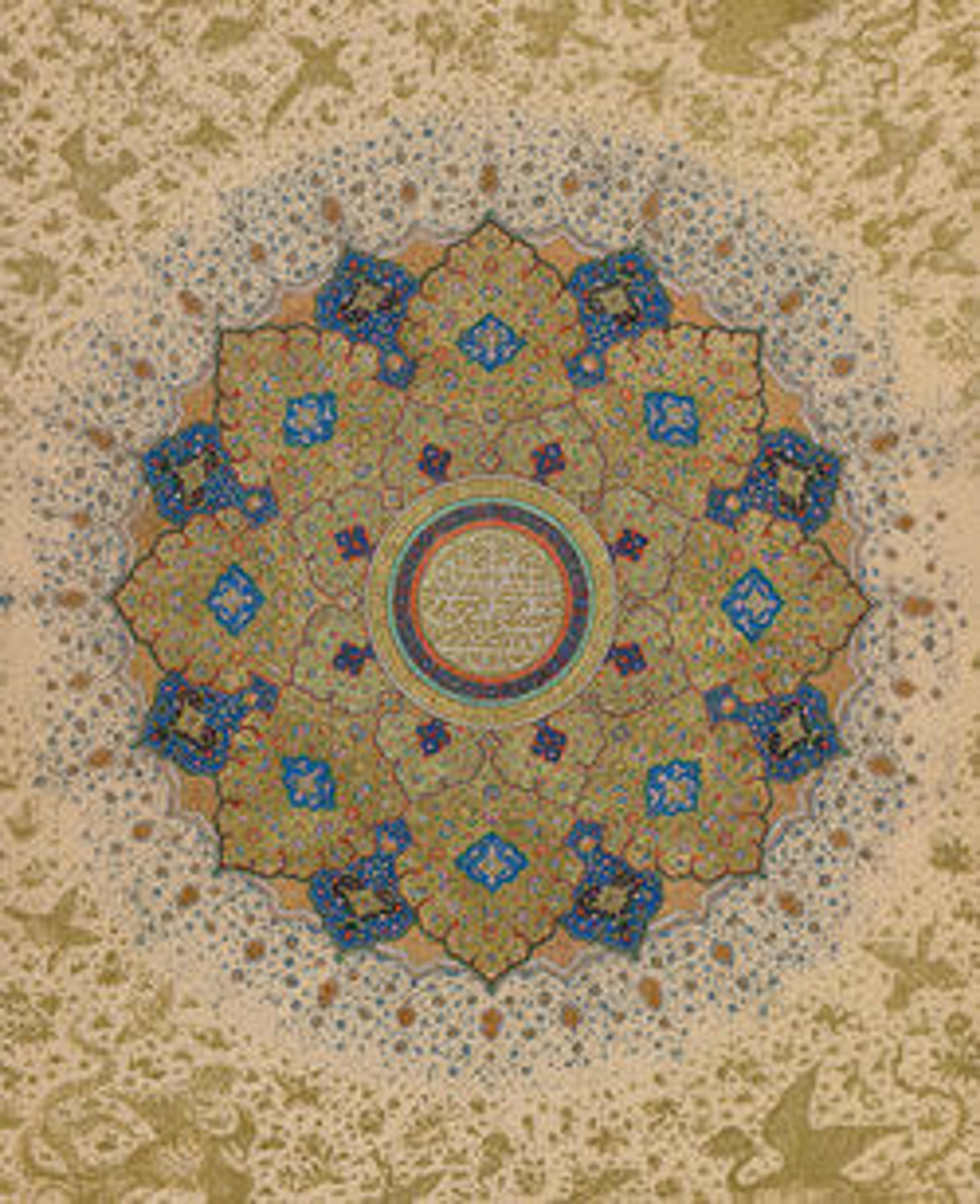"Bizhan Slaughters the Wild Boars of Irman", Folio from a Shahnama (Book of Kings)
The colophon folio, now in the Sackler Gallery, Washington, D.C. informs us that the manuscript from which this page comes, was produced in the city of Shiraz, ordered by the Injuid dynasty vizier Hasan Qavam al-Daula va al-Din in 741/1341. This early painting depicts the hero Bizhan ridding the Armenian territories of a terrorizing band of wild boars.
Artwork Details
- Title: "Bizhan Slaughters the Wild Boars of Irman", Folio from a Shahnama (Book of Kings)
- Author: Abu'l Qasim Firdausi (Iranian, Paj ca. 940/41–1020 Tus)
- Calligrapher: Hasan ibn Muhammad ibn `Ali ibn (?) Husaini, known as al-Mausili
- Patron: al-Hasan Qawam al-Daula wa'l-Din (Iranian, ca. 1303–1357 Shiraz)
- Date: dated 741 AH/1341 CE
- Geography: Made in Iran, Shiraz
- Medium: Ink, opaque watercolor, and gold on paper
- Dimensions: Painting: H. 3 1/2 in. (8.9 cm)
W. 9 7/16 in. (24 cm)
Page: H. 14 3/8 in. (36.5 cm)
W. 11 15/16 in. (30.3 cm)
Mat: H. 22 in. (55.9 cm)
W. 16 in. (40.6 cm) - Classification: Codices
- Credit Line: H. O. Havemeyer Collection, Gift of Horace Havemeyer, 1929
- Object Number: 29.160.22
- Curatorial Department: Islamic Art
More Artwork
Research Resources
The Met provides unparalleled resources for research and welcomes an international community of students and scholars. The Met's Open Access API is where creators and researchers can connect to the The Met collection. Open Access data and public domain images are available for unrestricted commercial and noncommercial use without permission or fee.
To request images under copyright and other restrictions, please use this Image Request form.
Feedback
We continue to research and examine historical and cultural context for objects in The Met collection. If you have comments or questions about this object record, please contact us using the form below. The Museum looks forward to receiving your comments.
